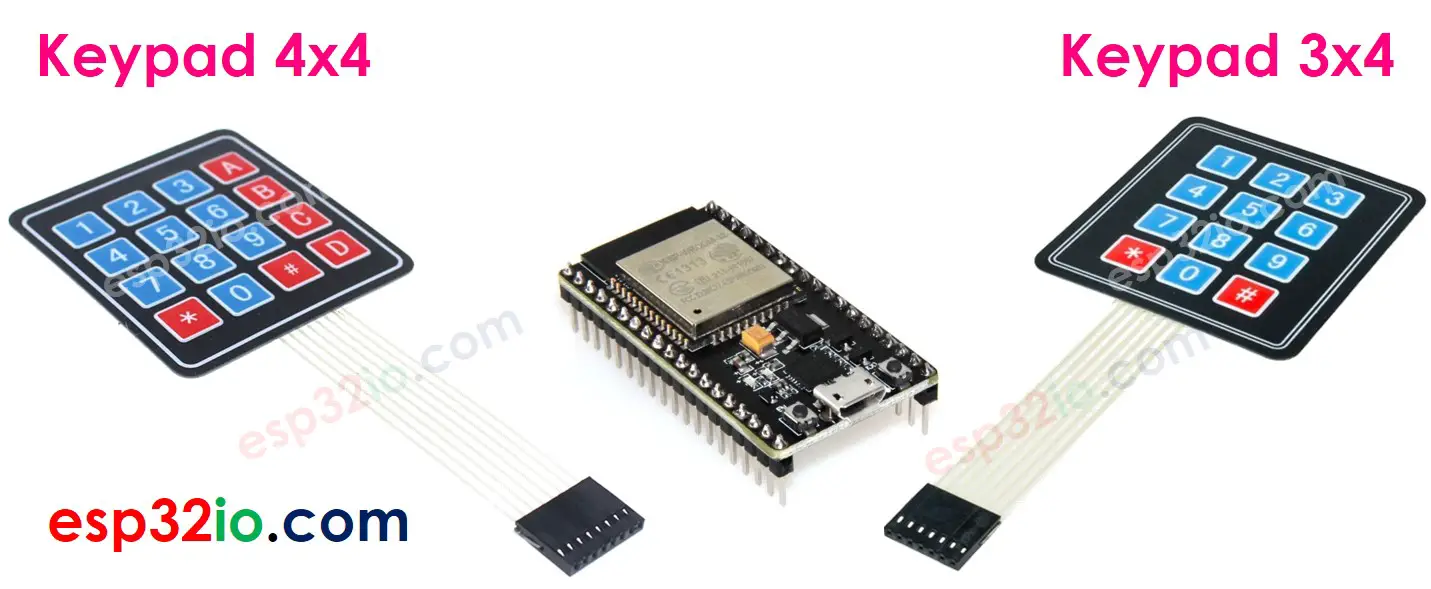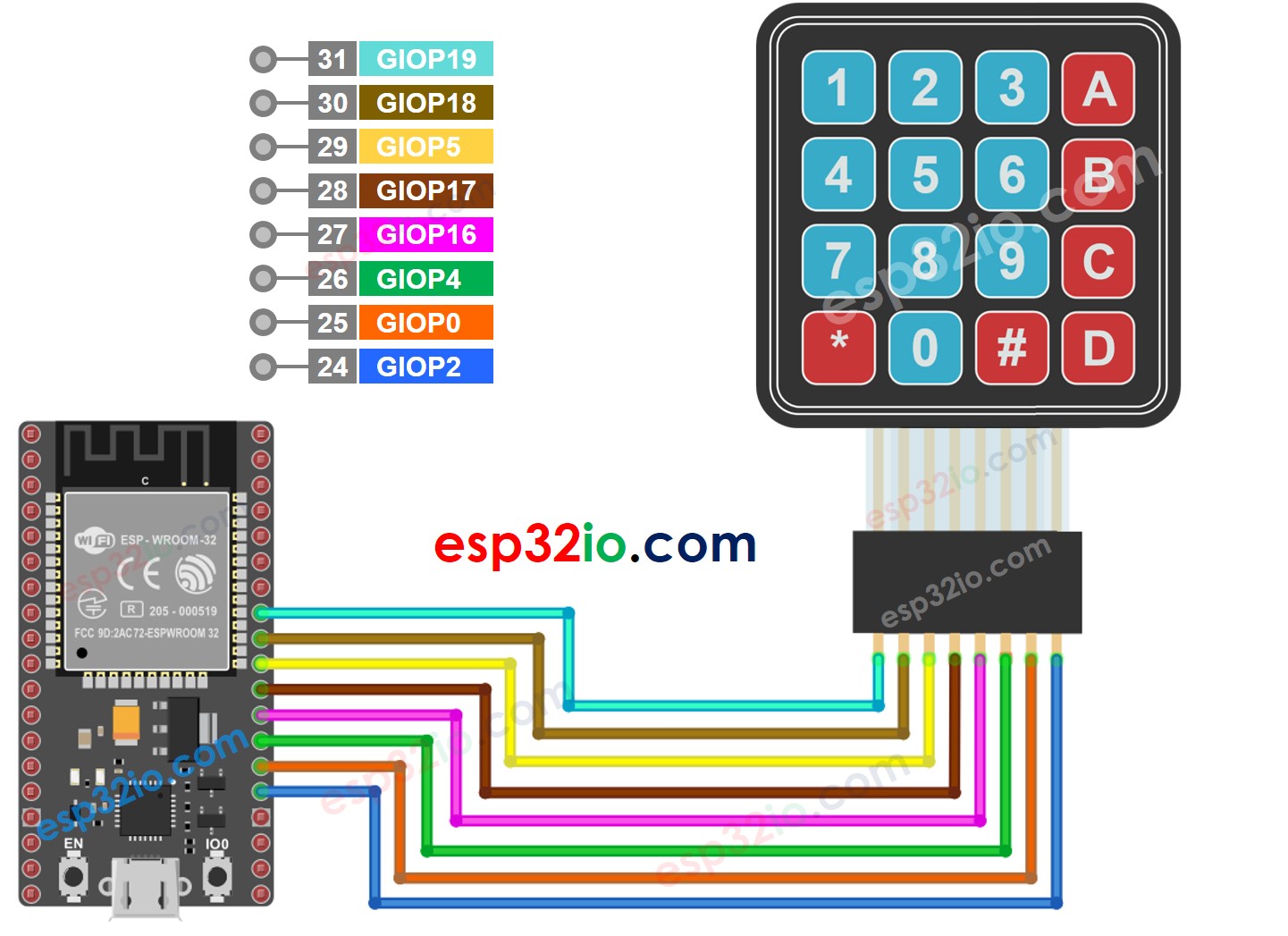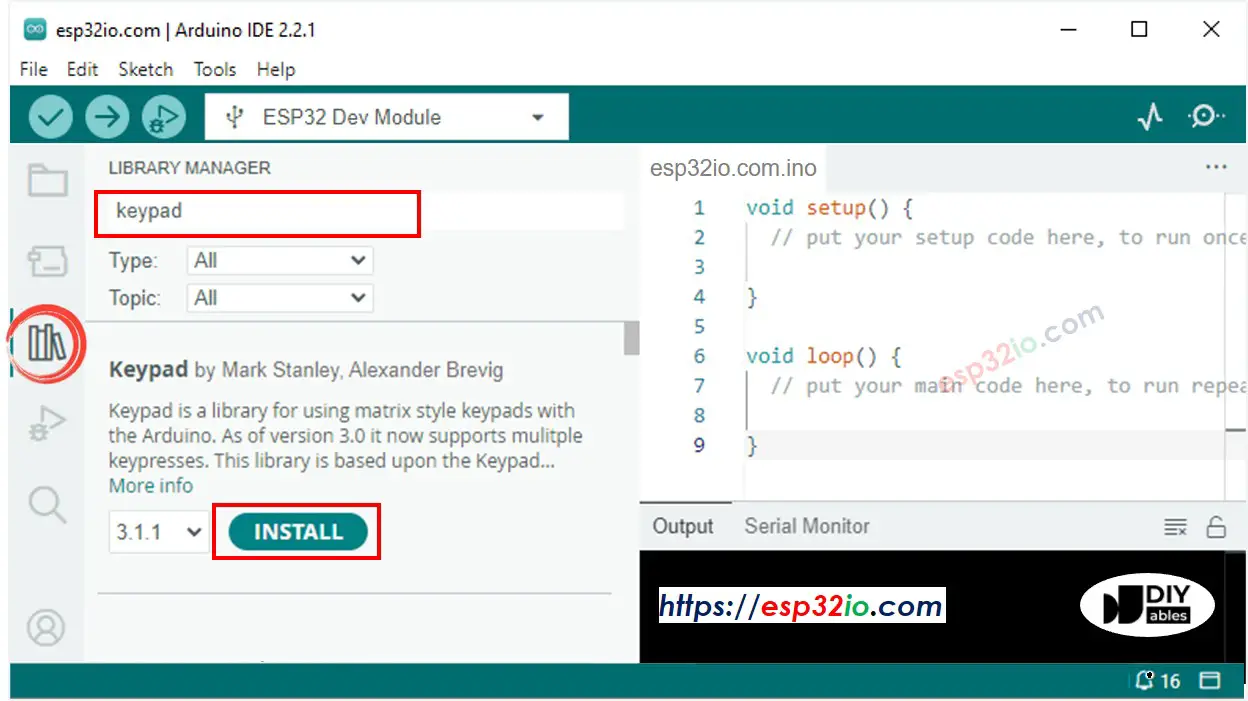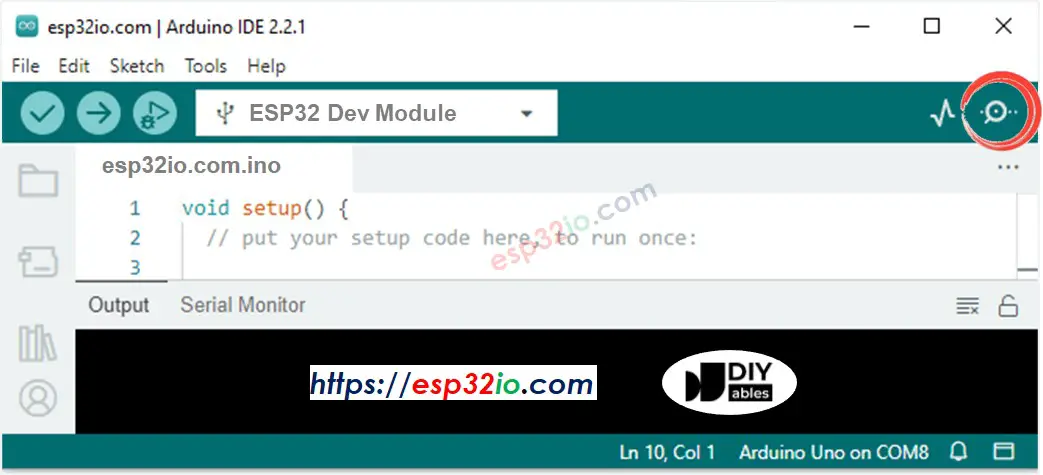ESP32 - Keypad
This tutorial instructs you how to use ESP32 with keypad. In detail, we will learn:
- How to use keypad 3x4 with ESP32
- How to use keypad 4x4 with ESP32
- How to use the password inputted from keypad
This tutorial shows how to program the ESP32 using the Arduino language (C/C++) via the Arduino IDE. If you’d like to learn how to program the ESP32 with MicroPython, visit this ESP32 MicroPython - Keypad tutorial.
Hardware Used In This Tutorial
Or you can buy the following kits:
| 1 | × | DIYables ESP32 Starter Kit (ESP32 included) | |
| 1 | × | DIYables Sensor Kit (30 sensors/displays) | |
| 1 | × | DIYables Sensor Kit (18 sensors/displays) |
Introduction to Keypad

The keypad is composed of a group of buttons arranged in the matrix (rows and columns). A button represents for a key. There are many types of keypad. The keypad 3x4 (12 keys) and keypad 4x4 (16 keys) is two most common-used on DIY projects.
Keypad Pinout
Keypad pins are categorized into two groups: row and column.
- The keypad 3x4 has 7 pins:
- R1, R2, R3, R4: row-pins
- C1, C2, C3: column-pins
- The keypad 4x4 has 8 pins:
- R1, R2, R3, R4: row-pins
- C1, C2, C3, C4: column-pins

How Keypad Works
See how keypad works
Wiring Diagram between Keypad and ESP32
ESP32 - Keypad 3x4 wiring diagram
- How to connect ESP32 and keypad 3x4 using breadboard

This image is created using Fritzing. Click to enlarge image
- How to connect ESP32 and keypad 3x4 using screw terminal block breakout board

ESP32 - Keypad 4x4 wiring diagram
- How to connect ESP32 and keypad 4x4 using breadboard

This image is created using Fritzing. Click to enlarge image
- How to connect ESP32 and keypad 4x4 using screw terminal block breakout board

If you're unfamiliar with how to supply power to the ESP32 and other components, you can find guidance in the following tutorial: The best way to Power ESP32 and sensors/displays.
ESP32 Code
Keypad 3x4
Keypad 4x4
Quick Instructions
- If this is the first time you use ESP32, see how to setup environment for ESP32 on Arduino IDE.
- Click to the Libraries icon on the left bar of the Arduino IDE.
- Type keypad on the search box, then look for the keypad library by Mark Stanley, Alexander Brevig
- Click Install button to install keypad library.

- Copy the above code and paste it to Arduino IDE.
- Compile and upload code to ESP32 board by clicking Upload button on Arduino IDE
- Open Serial Monitor on Arduino IDE

- Press some keys on keypad
- See the result in Serial Monitor
Keypad and Password
The keypad is widely used to authenticate someone by password. In this tutorials, a valid password is pre-defined in the code. When an user inputs the password from keypad, it is compared with the pre-defined password:
- If matched, the access is granted.
- If not, the access is defined.
To use password with keypad, we specify two special keys:
- A key to start inputting the password. For example, key "*"
- A key to finish inputting the password. For example, key "#"
The password inputed from an user will be stored in a string, called the inputted password string. When a key is pressed:
- If an inputted key is "*", clear the inputted password string to start new password
- If an inputted key is NOT "*" or "#", add the key to the inputted password string.
- If an inputted key is "#", compare the inputted password string with the pre-defined password.
Keypad - Password Code
- Run above code
- Open Serial Monitor on Arduino IDE

- Press "123456" keys and press "#"
- Press "7890" keys and press "#"
- See the result on Serial Monitor. It looks like the below:
Video Tutorial
Making video is a time-consuming work. If the video tutorial is necessary for your learning, please let us know by subscribing to our YouTube channel , If the demand for video is high, we will make the video tutorial.
